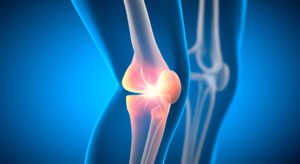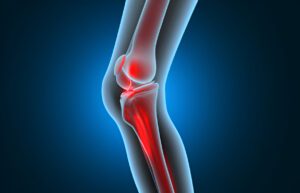Meniscus Missteps and Mending Moments in Knee Surgery
Knee injuries can often throw a wrench in an athlete’s plans, sidelining them from their favorite sports. Among these injuries, meniscus tears are common culprits. Understanding the role of the meniscus in knee health and knowing when to opt for repair over removal can make a world of difference in recovery and future performance. This blog aims to shed light on the crucial decision-making process between meniscus repair and removal, especially for those passionate about sports medicine and physical therapy.
The Meniscus Unveiled

The meniscus is a vital component of the knee, acting like a cushion between the thigh bone (femur) and the shin bone (tibia). There are two menisci in each knee—the medial and lateral meniscus. These crescent-shaped cartilages help absorb shock, stabilize the knee joint, and facilitate smooth movement. When the meniscus is compromised, it can lead to pain, swelling, and limited mobility. Athletes, in particular, need to be aware of these symptoms to prevent further complications.
Understanding Meniscus Tears
A meniscus tear is a common sports injury that can occur due to sudden twists or turns, often experienced during high-impact activities. There are several types of meniscus tears, each with unique characteristics:
- Vertical Tears: These occur along the length of the meniscus and may progress to a “bucket handle” tear if not treated.
- Horizontal Tears: These split the meniscus into an upper and lower part, often resulting from degeneration.
- Complex Tears: A combination of different tear patterns, making them more challenging to diagnose and treat.
Symptoms of a meniscus tear include knee pain, swelling, stiffness, and a popping sensation. Accurate diagnosis usually involves a physical examination, MRI, or sometimes an arthroscopy.
Meniscus Repair vs. Removal

When it comes to treating a meniscus tear, doctors typically consider two options—repair or removal. Let’s break down the benefits, risks, and recovery times associated with each:
Meniscus Repair
Meniscus repair involves stitching the torn pieces back together, allowing the cartilage to heal naturally. This option is often recommended for younger patients with tears that have good healing potential. Benefits include preserving natural knee function and delaying the onset of arthritis. However, the recovery period can be lengthy, often taking several months, and there’s a risk of re-tearing.
Meniscus Removal (Meniscectomy)
In contrast, a meniscectomy involves removing the damaged part of the meniscus. This procedure might be suggested when the tear is in a region with poor blood supply. While recovery is faster (typically 4-6 weeks), it can lead to long-term issues such as decreased knee stability and increased risk of osteoarthritis.
Factors Influencing Treatment Choice
Choosing between meniscus repair and removal isn’t a one-size-fits-all decision. Several factors play a critical role:
- Patient Age: Younger individuals, especially athletes, are often advised to opt for repair to preserve knee function.
- Tear Location: Tears in areas with good blood supply (red-red zone) are more likely to heal and are suitable for repair.
- Activity Level: Highly active individuals might benefit from repair to maintain optimal performance.
- Overall Health: General health and existing medical conditions can influence the choice of treatment.
Real-Life Case Studies
To better understand the decision-making process, let’s explore some real-life cases:
Case 1: The Young Athlete
A 22-year-old basketball player experienced a vertical meniscus tear. Given his age and the nature of the tear, his doctor recommended repair to preserve the meniscus. After a dedicated rehabilitation program, he returned to the court with improved knee function and minimal complications.
Case 2: The Middle-Aged Runner
A 45-year-old avid runner suffered a complex meniscus tear. Due to the tear’s complexity and poor blood supply, meniscectomy was deemed the best option. She recovered quickly and resumed running, though with a modified training regimen to protect her knee.
Recovery and Rehabilitation
Regardless of the chosen treatment, recovery and rehabilitation are crucial. Post-surgery care often includes:
- Physical Therapy: A tailored program to restore strength, flexibility, and range of motion.
- Pain Management: Medications and ice therapy to alleviate discomfort and swelling.
- Structured Rehabilitation Plan: Following a gradual progression plan to avoid re-injury and ensure optimal recovery.
Adhering to a structured rehabilitation plan is vital for a successful recovery. Physical therapists play a pivotal role in guiding patients through exercises and milestones, ensuring a safe return to daily activities and sports.
Deciding between meniscus repair and removal is a significant decision that can impact an athlete’s performance and quality of life. By understanding the intricacies of each option and considering factors like age, activity level, and tear characteristics, patients can make informed choices. For athletes, sports medicine enthusiasts, and physical therapists, staying informed about the latest in knee surgery techniques and recovery strategies is paramount.
If you’ve experienced a meniscus tear or have insights to share, we encourage you to join the conversation in the comments below. Don’t forget to subscribe for more valuable content on sports injuries and recovery strategies. Together, we can stay active and informed in the world of knee health!

